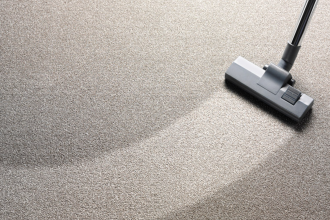Embarking on the journey of setting up your first aquarium is an exciting and rewarding endeavor. Whether you’re drawn to the vibrant colors of tropical fish or the serene beauty of freshwater plants, creating a thriving aquatic environment requires careful planning and attention to detail. In this comprehensive guide, we’ll walk you through the step-by-step process of setting up your first aquarium, ensuring a successful and enjoyable experience.
Choosing the Right Aquarium
Before diving into the world of aquariums, it’s crucial to choose the right tank size. Consider the available space in your home and the type of fish or aquatic life you want to keep. A larger aquarium is generally more stable and forgiving for beginners, as it allows for better water parameters and reduces the risk of sudden changes.
Once you’ve determined the size, select an aquarium made of high-quality glass or acrylic. Ensure that it comes with a sturdy stand to support the weight of the tank, water, and decorations.
Selecting Equipment and Accessories
Equipping your aquarium with the right gear is pivotal for creating a conducive environment for your aquatic companions. Let’s delve into the essential equipment and accessories that will form the backbone of your aquatic haven:
Filtration System:
Selecting an appropriate filtration system is paramount to maintaining water quality. Filters are instrumental in eliminating debris and harmful substances that can compromise the well-being of your fish. Choose from various options such as hang-on-back filters, canister filters, or sponge filters based on the size of your aquarium. Consider factors like ease of maintenance and the specific needs of your aquatic community when making this crucial decision.
Heater:
For enthusiasts of tropical fish, a heater is indispensable for sustaining a stable water temperature within the optimal range. Most tropical species thrive in temperatures between 75-80°F (24-27°C). Ensure your heater is reliable and equipped with a thermostat to prevent fluctuations that might stress your fish.
Substrate:
The choice of substrate is not just an aesthetic consideration but also a factor that influences the well-being of your aquarium’s inhabitants. Gravel or sand is commonly used, with the decision based on your aesthetic preferences and the specific needs of your chosen fish or plants. Some species may prefer a sandy substrate for burrowing, while others thrive in a gravel environment.
Decorations:
Enhance the visual allure of your aquarium with carefully chosen decorations. Rocks, driftwood, and Fissidens Fontanus which aquascapers also call ‘Phoenix Moss’ not only provide a visually appealing backdrop but also serve as hiding spots and shelter for your fish. Ensure that any additions are aquarium-safe, free from toxic substances, and won’t alter crucial water parameters.
Lighting:
Proper lighting is essential, especially if you plan to cultivate live plants. LED lights are an energy-efficient option, available in various spectrums to cater to the specific needs of your chosen flora. Adequate lighting not only supports plant growth but also enhances the overall vibrancy of your aquatic display.
By carefully selecting and incorporating these key elements into your aquarium setup, you lay the foundation for a thriving and balanced aquatic environment. Each piece plays a crucial role in creating a harmonious and visually captivating underwater world that your fish will call home.
Setting Up the Aquarium
Setting up your aquarium is a meticulous process that requires careful attention to detail. Follow these steps to create an environment that promotes the well-being of your aquatic inhabitants:
Rinse Substrate:
Before laying down your substrate, thoroughly rinse it to eliminate any dust or debris. This simple yet crucial step ensures a clear and pristine environment for your fish, preventing any potential disturbances to water quality.
Place Decorations:
With your substrate in place, it’s time to bring your aquarium to life with carefully arranged decorations. Consider not only the aesthetic appeal but also the functional aspects – create open spaces for fish to swim freely and incorporate hiding spots or caves for shyer species. This attention to the layout mimics a natural habitat, providing both security and stimulation for your aquatic friends.
Install Equipment:
Precisely install your filtration system, heater, and lighting as per the manufacturer’s instructions. Strategic placement is key; position these components to facilitate optimal water circulation and even temperature distribution throughout the tank. A well-thought-out equipment setup contributes to the overall stability and health of your aquatic ecosystem.
Fill the Tank:
Once your decorations and equipment are in place, it’s time to fill the tank with dechlorinated water. The use of a water conditioner is crucial at this stage to neutralize harmful substances such as chlorine and chloramine, making the water safe for your fish. This step ensures a healthy starting point for your aquatic community.
Cycle the Aquarium:
One of the most critical phases in setting up an aquarium is the nitrogen cycle. Allow the tank to cycle for a few weeks before introducing any fish. During this period, beneficial bacteria naturally colonize the aquarium, converting toxic ammonia produced by fish waste into less harmful compounds. This process establishes a stable biological foundation, promoting the long-term health and vitality of your aquatic environment.
Choosing Fish and Introducing Them to the Aquarium
With your aquarium fully set up and cycled, it’s time to choose fish that are compatible with your tank size and water parameters. Research the specific needs and behaviors of the species you’re interested in to ensure a harmonious community. When introducing fish to the aquarium, follow these steps:
Acclimation:
Float the sealed bags containing the fish in the aquarium for about 15-20 minutes to equalize the temperature. Gradually add small amounts of aquarium water to the bag to acclimate the fish to the new environment.
Release the Fish:
Gently release the fish into the aquarium, avoiding sudden movements or disturbances. Dim the lights to reduce stress during the initial introduction.
Maintaining Your Aquarium
Maintaining your aquarium is an ongoing responsibility crucial for the well-being of your aquatic pets. Regular water changes are essential to remove accumulated debris and maintain water quality, with a recommended 20-25% change every 2-4 weeks. Additionally, monitoring water parameters is vital. Utilize a water test kit to check levels of ammonia, nitrite, nitrate, pH, and temperature regularly. Adjust these parameters as needed to ensure conditions remain within the appropriate range for the specific needs of your fish.
When it comes to feeding, provide your fish with a balanced diet tailored to their species. It’s important to avoid overfeeding, as excess food can lead to water quality issues and impact the health of your aquatic companions negatively. Feed your fish in moderation, considering their size and dietary requirements.
Regular cleaning is also crucial in maintaining a healthy aquarium. Clean the aquarium glass, decorations, and equipment consistently to prevent algae buildup. Employ an algae scraper for glass cleaning and use a siphon during water changes for substrate cleaning. This comprehensive approach to maintenance not only enhances the visual clarity of the aquarium but also contributes to the overall health and vitality of your aquatic ecosystem. Consistency and attention to detail are key in ensuring a thriving and enjoyable aquarium experience for both you and your underwater companions.
Setting up your first aquarium is a fulfilling and educational experience. By carefully selecting the right equipment, decorations, and fish, and maintaining proper care, you’ll create a thriving aquatic ecosystem in your home. Remember, patience is key in the world of aquarium keeping. Enjoy observing your fish, and embrace the continuous learning process that comes with this rewarding hobby. Happy fish-keeping!















